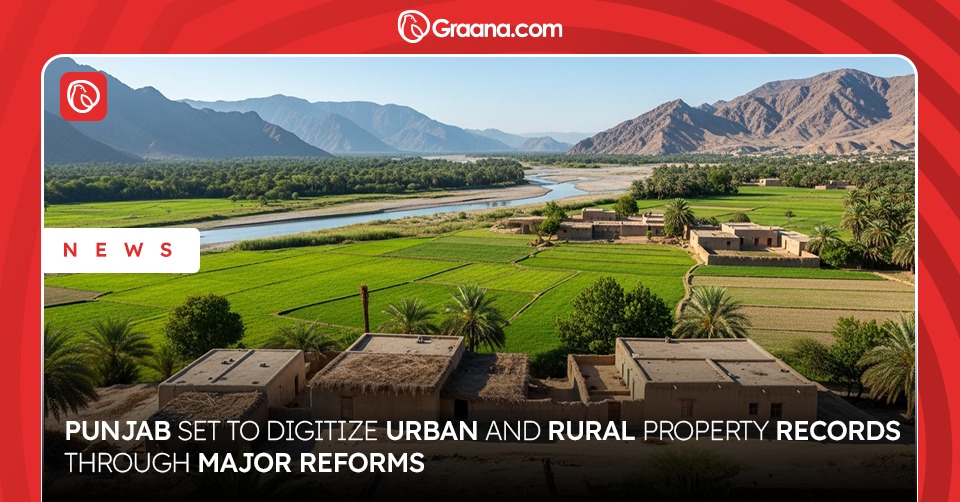Preamble
Pakistan faced a myriad of challenges in the early phase of the country’s formation. Despite an influx of refugees, weak government institutions, and a plethora of urban challenges, Pakistan managed to steer itself out of the crisis. The article presents the public policies and programs which were adopted in dealing with the urban crisis in Pakistan during the first fifty years (1947-1997). The policies fall into three distinct phases in relation to the evolving political and economic regimes. The Iqbal Institute of Policy Studies (IIPS) presents an analysis of how successful these policies and programs have been in managing the urban crisis of Pakistan during the period. The effect of these policies on present urban planning structures and initiatives is also discussed.
Research Questions
- State of urbanisation in Pakistan?
- What were Pakistan’s urban policies over the first fifty years of inception?
- What was the impact of those policies on achieving urban planning goals?
- Phase One of Urban Policies 1947 – 1970
- Phase Two of Urban Policies 1971 – 1978
- Phase Three of Urban Policies 1980 – 1995
Introduction
Pakistan is besieged by a number of urban problems namely, a shortage of housing, ill-managed land market, inefficient land-use systems, and huge shortfalls in the provision of water supply, sewers, drainage, waste disposal, traffic management, electricity, transport, and pollution control. Not only are these problems widespread, but they are also increasing the social disparities between the rich and the poor on a massive scale. The whole situation is summed up in the term “urban crisis”. Pakistan remains a pioneer in formalising physical planning and housing as a development function. It has a long and distinguished record of urban planning at the national level. The policies are reflected in five-year plans and urban development budgets in the first fifty years of Pakistan’s inception. Being a low-income country with an increasing population, it is evident that urban planning in Pakistan remained restricted due to budget constraints. However, these policies did amass major achievements but were later used to enhance private interests at the cost of public welfare. Pakistan also developed sizable institutional structures in physical planning and environmental sectors, but these remained inefficient due to a proliferation of offices, officers, and organisations without a proportionate increase in their effectiveness. All in all, previous urban policies have achieved a lot in terms of Pakistan’s urban crisis, but lessons and insights can be taken from the shortfalls to improve urban policies of the future.
Urbanisation and Urban Policy in Pakistan
The concentration of people in towns and cities is called urbanisation. It results in the growth of urban areas and is closely linked to industrialisation and the sociological process of modernisation. The term is also used to represent the level of urban development relative to the overall population. The level of urbanisation increased from about 18 per cent in 1951 to 32 per cent in 1991 (Finance Division, 1994). This shows that Pakistan is rapidly urbanising and transforming the country’s social structure and settlement system. About one-third of Pakistan’s population lives in urban settlements (Qadeer, 1996) and this has led to the disappearance of open countryside wilderness and emergence of open sewers, garbage heaps, stores, homes and factories. The problems which emerge due to urbanisation not only affect the people, but they also affect the environment and the society at large.
Pakistan has been among the pioneers of initiating urban planning policies. Since 1950, when development planning began, “Housing and Settlements” have been a distinct planning chapter in the five-year plans rolled out by the government. Urban policies refer to governmental acts that affect the structure, administration, and quality of life in urban areas through the provision of infrastructure, land development, and regulation of civic amenities (Qadeer, 1996). Urban policies also act as a tool for guiding and framing the internal structure of human settlements. From the beginning, the basic tenets of urban planning have focused on mobilising labour, funds, and physical resources of the people who own and use common buildings. The public role is to lay an effective institutional, infrastructural, and financial framework for the private market. At the same time, the government should provide resources which cannot be provided by the individuals.
Pakistan’s urban and housing programs fall under five key policy areas, namely, housing and ‘Katchi Abadi’ improvement, provision of community utilities, institution building, government buildings, and special projects for tribal areas. The policies aim to ensure smooth provision of water supplies, efficient sewerage systems, public transport, and overall sanitation in the society. Institutional building is particularly important for carrying out surveys, designs, and planning for future cities alongside the formation of provincial and local planning and housing departments. The plan and programs for each of the different policy areas remained consistent and continued during the forty years of development of the sector. Although the allocation of funds varied over time, the objective of programs remained unchanged (Qadeer, 1996).
Phase One of Urban Policies 1947 – 1970
Since independence (1947), Pakistan’s urban problems have multiplied manifolds and have evolved in their scope and complexity. To examine the impact of Pakistan’s urban policies, they can be divided into three phases. The first phase saw the resettlement of refugees in the aftermath of Muslims migrating from India. According to Waterston (1963), eighty-seven per cent of the population lived in rural areas at the time of independence. The key element of urban housing schemes remained core housing schemes (one to two-room quarters) to fulfil the needs of migrants urgently. Rehabilitation of refugees was also a major reason for the suburban expansion of cities in the forms of satellite towns.
The pre-independence tradition of plot development and housing schemes continued as a policy instrument with public-funded development projects, housing colonies, and land service schemes. During this phase, an emphasis was also laid on the development of government buildings and houses for public servants. The first three five-year plans were focused more on the development of property and master plans and schemes for major cities. Planning regulation, urban administration, and traffic management were largely ignored during this phase.
The evaluation of the third five-year plan concluded that these plans could not keep up with the housing needs; housing shortage increased from 0.6 million units in 1960 to 1.5 million dwellings, and only 10 per cent of the population had safe piped water supply by 1970 (Government of Pakistan, 1964). The disparity between the middle and upper classes increased, and the working class and the poor divide also widened. The Planning Commission concluded in the third five-year plan that the policies pursued so far need a thorough re-examination and reorientation” (Government of Pakistan, 1964).
Phase Two of Urban Policies 1971 – 1978
The separation of East Pakistan in 1971 brought down the second Martial Law government and brought in six years of populist rule. The new government tilted towards public initiatives for socio-economic development, mainly by providing mass housing for the working and lower classes. A new swarm of squatter settlements had emerged in major cities, and it became the prime concern to deliver urban services for them. These programs were accompanied by a policy of site and service up-gradation for low-income households. The World Bank started lending to Pakistan for urban projects, and such programs were high on its priority. Thousands of core houses were built for the poor and low-income groups, but the programs were not evaluated, and no reliable statistics to gauge their performance exist. The significant fact from a policy perspective is that the public sector took on the responsibility of housing for the poor and subsequent regimes continued adopting them. Another step was that autonomous development authorities were established for cities to undertake public works, water sewerage, and transport.
During the era of military rule under Zia, housing and commercial plots were given at subsidised rates to politicians and public officeholders. These plots were a means of acquiring assets whose actual value was five to ten times the official price. This became a currency for corruption, and the policy is now entrenched in Pakistan’s political and administrative system. Urban development in this period also saw the introduction of international bodies’ influence on Pakistan’s policies. Thus, began an era of international agencies making policies as solutions to urban problems of Pakistan. Large scale migration of Pakistani workers to the Middle East and Britain transformed the urban landscape. The remittances triggered home building activities, and a boost in consumer industry was seen. Private housing buildings, both in cities and villages, saw a massive improvement but also fuelled the speculative rise of the land market, which led to the development of an informal land market. All in all, the second phase continued the policies of the first phase, along with acknowledging the needs of poor and low-income social classes. The ground was laid for international agencies in determining the urban policies of Pakistan. About 1.43 million units, 40.4 per cent of the housing stock in 1980, were built in the previous ten years, compared to 1.4 million or 39.6 per cent built in the preceding 23 years since the birth of Pakistan (Qadeer, 1996).
Phase Three of Urban Policies 1980 – 1995
After ousting of Bhutto in 1977 by General Zia, it took about three years to affect policies, but urban policies remained unaltered. The fifth five-year plan remained focused on the mobilisation of the private sector, slum improvements, site development, and expansion of safe water supplies (Government of Pakistan, 1978). A shift to greater reliance on the private sector for managing urban facilities came about during the 1980s and 1990s. The previous development plans continued, but the difference lay in the scale and focus. The seventh plan (1988 – 1993) allocated Rs 20 billion for physical planning and housing. It aimed at fulfilling the incremental demand for affordable housing for the poor and low-income households but now on a self-finance basis (Government of Pakistan, 1988). This introduced the policy of cost recovery, smaller subsidies, and local responsibility as highlighting factors in the 1990s. The Orangi Pilot Project (OPP) started in a slum of Karachi (1980) is the most famous and successful of local self-help efforts.
Community-based organisations were topped by international NGOs, many of which emerged with foreign grants and international funding. This contributed to paving of streets, water supply schemes, and schools in cities and villages. The sixth five-year plan began with a cumulative shortage of 1.4 million housing units in 1983. By 1995, the housing deficit had combined to reach 6.25 million and additional 150,000 units per year were required to meet the new demands (Government of Pakistan, 1996). Another significant development seen was the introduction of universities, the Army, the Railways, the Water and Power Authority, and other public corporations in land development, forming societies and foundations. The urban land market became highly speculative in the 1990s, and house prices remained unaffordable for the professional class.
All in all, the land market remained highly fragmented, speculative, and embedded in the network of privilege, connections and mobilisation. Dowall (1991) and Nientied (1987) have documented these features of the residential land market in Karachi for both upper- and lower-income areas. The enormous unmet demand for housing co-existed with many hundred thousand residential plots lying vacant. Both factors point to poor public management of the land development process.
Conclusion
Urban policies have led to notable achievements and, at the same time, extensive failures. Over the years, cities have grown into metropolises and towns have transformed into cities. As Pakistan remains one of the pioneering countries which instituted urban policies, it started from scratch by developing sizable institutional structures in both public and private spheres. Ministries, divisions, public corporations, planning commissions, research institutes, laboratories, consultants, NGOs, land developers, home builders and almost all public and private elements of an urban development system, have been developed. But urban development requires a variety of collective goods for the welfare of citizens and not only plot and work development. The knowledge base of urban policies has largely remained fixed in the wake of internationalisation of urban policies, and the absence of accountability measures in the policy-making processes has eroded the capacity to develop a knowledge base. Overall, the policies yielded favourable outcomes for Pakistan and reforms, and future planning can enhance the success of such policies in achieving their targets.
Key findings
Pakistan faced a myriad of challenges in the early phase of the country’s formation. Despite an influx of refugees, weak government institutions, and a plethora of urban challenges, Pakistan managed to steer itself out of the crisis.
Pakistan is besieged by a number of urban problems namely, a shortage of housing, ill-managed land market, inefficient land-use systems, and huge shortfalls in the provision of water supply, sewers, drainage, waste disposal, traffic management, electricity, transport, and pollution control.
Pakistan also developed sizable institutional structures in physical planning and environmental sectors, but these remained inefficient due to a proliferation of offices, officers, and organisations without a proportionate increase in their effectiveness.
The level of urbanisation increased from about 18 per cent in 1951 to 32 per cent in 1991 (Finance Division, 1994).
Pakistan has been among the pioneers of initiating urban planning policies. Since 1950, when development planning began, “Housing and Settlements” have been a distinct planning chapter in the five-year plans rolled out by the government.
Pakistan’s urban and housing programs fall under five key policy areas, namely, housing and Katchi Abadi improvement, provision of community utilities, institution building, government buildings, and special projects for tribal areas.
For news and blogs, visit Graana.com.




